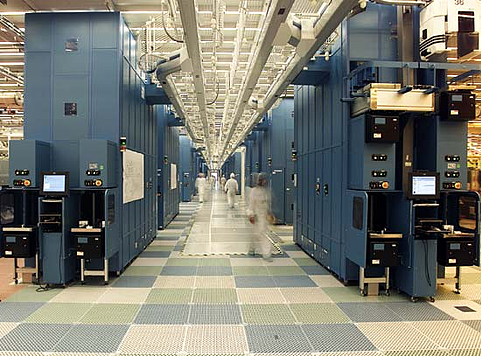By Dave Faulkner
Executive VP, Sales and Marketing, Cimetrix
We had a strong showing at SEMICON Japan at the Makuhari Messe December 1 - 3. Attendance was brisk, and Cimetrix products were on display at both the Meiden and the Rorze booths. This event was a great opportunity for us, since we have just started Cimetrix Japan K.K. effective November 25, 2010. The new Cimetrix company will provide both new market development and customer support for the Japan marketplace.
In the Meiden booth, Cimetrix EDA/Interface A products were on display. In addition, Meiden highlighted the partnership between Meiden, DSD, and Cimetrix, which allows DSD and Meiden to offer complete EDA solutions using Cimetrix technology. These solutions are available to both equipment suppliers and IC manufacturers, and Meiden listed the benefits and sample architectures for each group.

Cimetrix CIMControlFramework (CCF) was on display at the Rorze booth running a complete 450mm vacuum platform. Many visitors stopped to watch this powerful demonstration. Cimetrix products were also highlighted, along with Rorze’s unique ability to deliver a complete hardware/software platform solution for equipment suppliers using Rorze and Cimetrix technology.

One other highlight of the show was visiting the Axcelis booth where they highlighted their Integra plasma dry strip cleaning system that uses the Cimetrix CIMControlFramework. 
We also learned at the show that a new top 20 OEM in Japan would adopt Cimetrix connectivity products. It is great to see how companies are using our solutions to get to their products up and running in wafer fabs around the world.
Thanks to all those people who stopped by the booths. Please let us know if you need more information about Cimetrix connectivity or tool control solutions.




 I have been a Scoutmaster for the Boy Scouts of America for about 5 years now. Our troop goes camping several times a year. Utah offers a lot of beautiful and interesting camping areas. The variety is remarkable. In our troop we spent a lot of time teaching and preparing the boys to not only have fun, but also be safe and wise in their fun. Some planning ahead, training and common sense can make a huge difference. Nearly every week, I have our Senior Patrol Leader help all of the scouts in our troop recite a number of memorized phrases including the Scout Oath, Law, Slogan, Motto and sometimes even the Outdoor Code. The Scout Motto is the famous one known to almost everyone in the world; "Be Prepared". Reciting it every week helps our minds to remember to focus on being prepared for whatever may come. We prepare the boys to handle emergency situations such as medical and weather related emergencies. "Be Prepared" applies not only to scouting activities like camping, canoeing and hiking, but also to school, our careers and everything we do.
I have been a Scoutmaster for the Boy Scouts of America for about 5 years now. Our troop goes camping several times a year. Utah offers a lot of beautiful and interesting camping areas. The variety is remarkable. In our troop we spent a lot of time teaching and preparing the boys to not only have fun, but also be safe and wise in their fun. Some planning ahead, training and common sense can make a huge difference. Nearly every week, I have our Senior Patrol Leader help all of the scouts in our troop recite a number of memorized phrases including the Scout Oath, Law, Slogan, Motto and sometimes even the Outdoor Code. The Scout Motto is the famous one known to almost everyone in the world; "Be Prepared". Reciting it every week helps our minds to remember to focus on being prepared for whatever may come. We prepare the boys to handle emergency situations such as medical and weather related emergencies. "Be Prepared" applies not only to scouting activities like camping, canoeing and hiking, but also to school, our careers and everything we do. Industry organizations, such as SEMI and ISMI, have been touting the benefits of the Interface A, also known as EDA, standards for years. This year, SEMI approved an important revision to these standards to incorporate many of the lessons learned from early implementations. In addition, SEMATECH member companies (which make up 50 percent of the worldwide chip market) wanted ISMI to focus on a smaller number of projects with short-term benefits for 2009. Interface A (EDA) is on this short list.
Industry organizations, such as SEMI and ISMI, have been touting the benefits of the Interface A, also known as EDA, standards for years. This year, SEMI approved an important revision to these standards to incorporate many of the lessons learned from early implementations. In addition, SEMATECH member companies (which make up 50 percent of the worldwide chip market) wanted ISMI to focus on a smaller number of projects with short-term benefits for 2009. Interface A (EDA) is on this short list.
